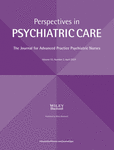The effect of a course on violence against women on the attitudes of student midwives and nurses towards domestic violence against women, their occupational roles in addressing violence, and their abilities to recognize the signs of violence
Abstract of manuscript was presented as an oral presentation at 3rd International Congress Different Dimensions of Violence and Social Perception on April 14 to 15, 2017, Kocaeli/Turkey.
Abstract
Aim
The aim of this study was to determine the effect of a course on violence against women on the attitudes of student midwives and nurses towards violence against women and their abilities to recognize the signs of violence.
Methods
This study used a pretest-posttest quasi-experimental design with experimental and control groups and was conducted with student midwives and nurses.
Results
The results indicated that the difference between pretest and posttest scores averaged across three scales was statistically significant for students in the experimental group (P < 0.001) and not statistically significant for students in the control group ( P > 0.05).
Practice Implications
The traditional attitudes of students who enrolled in the course on violence against women decreased, and their levels of knowledge of signs of violence increased.
CONFLICTS OF INTEREST
The authors declared that there are no conflicts of interest.




